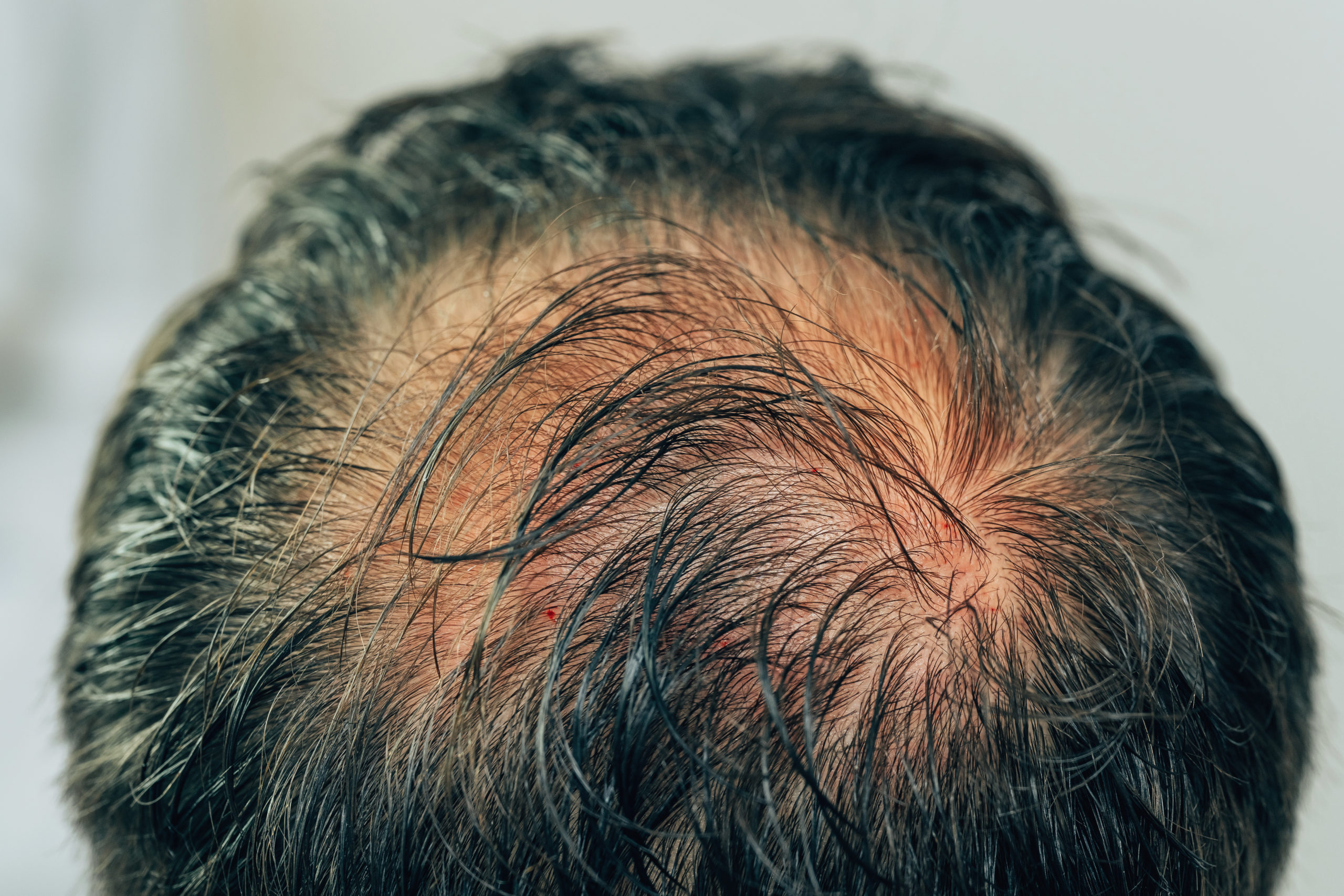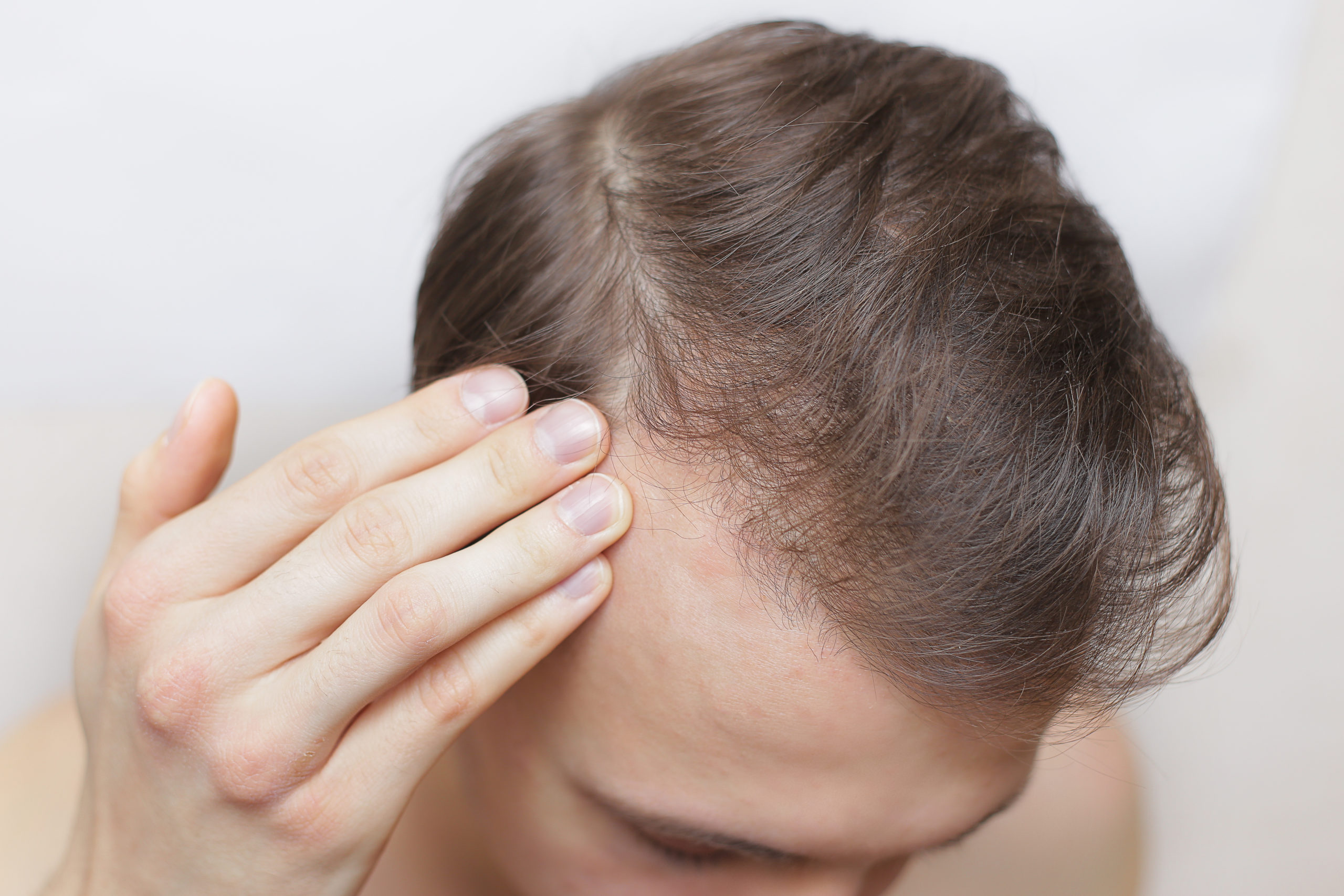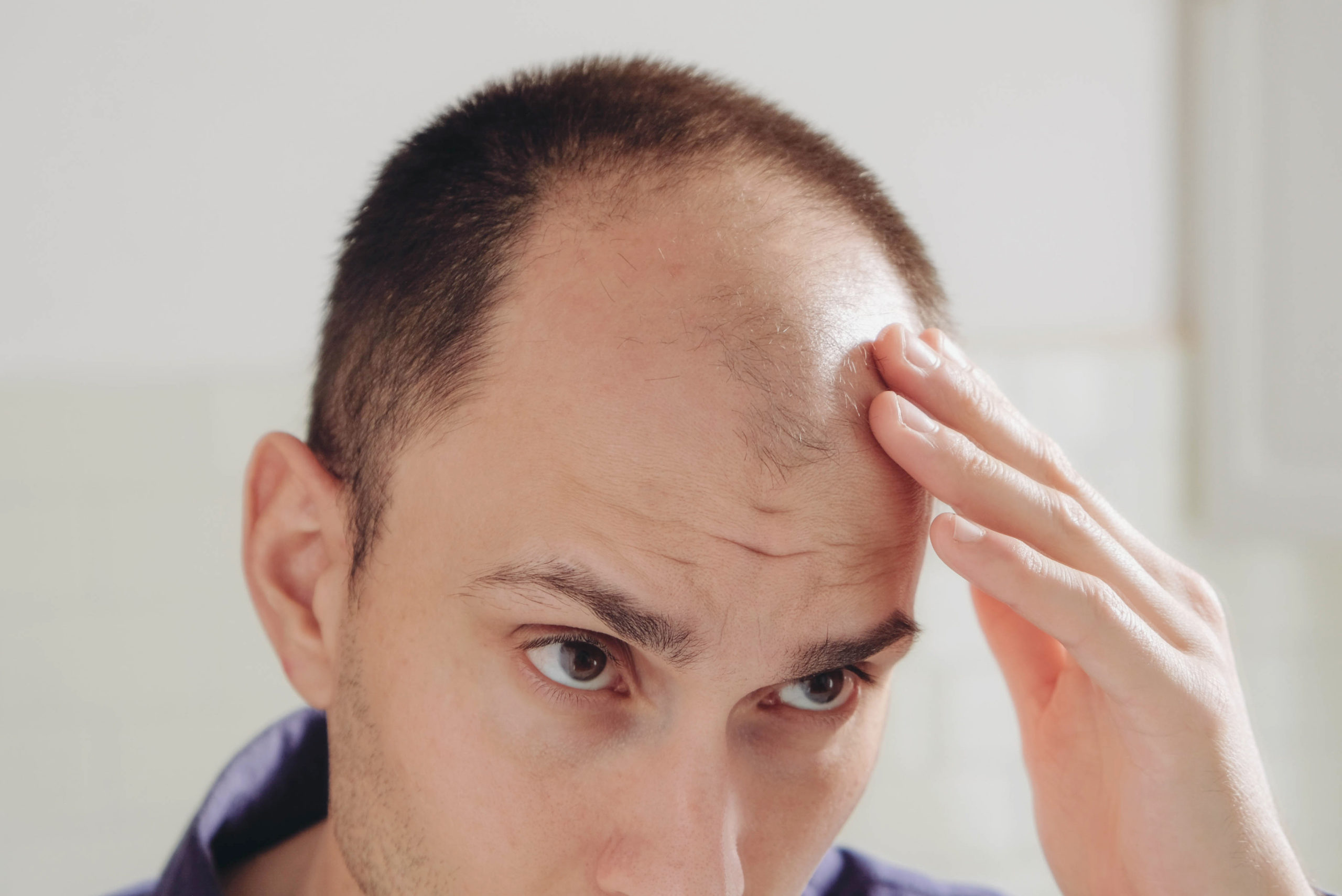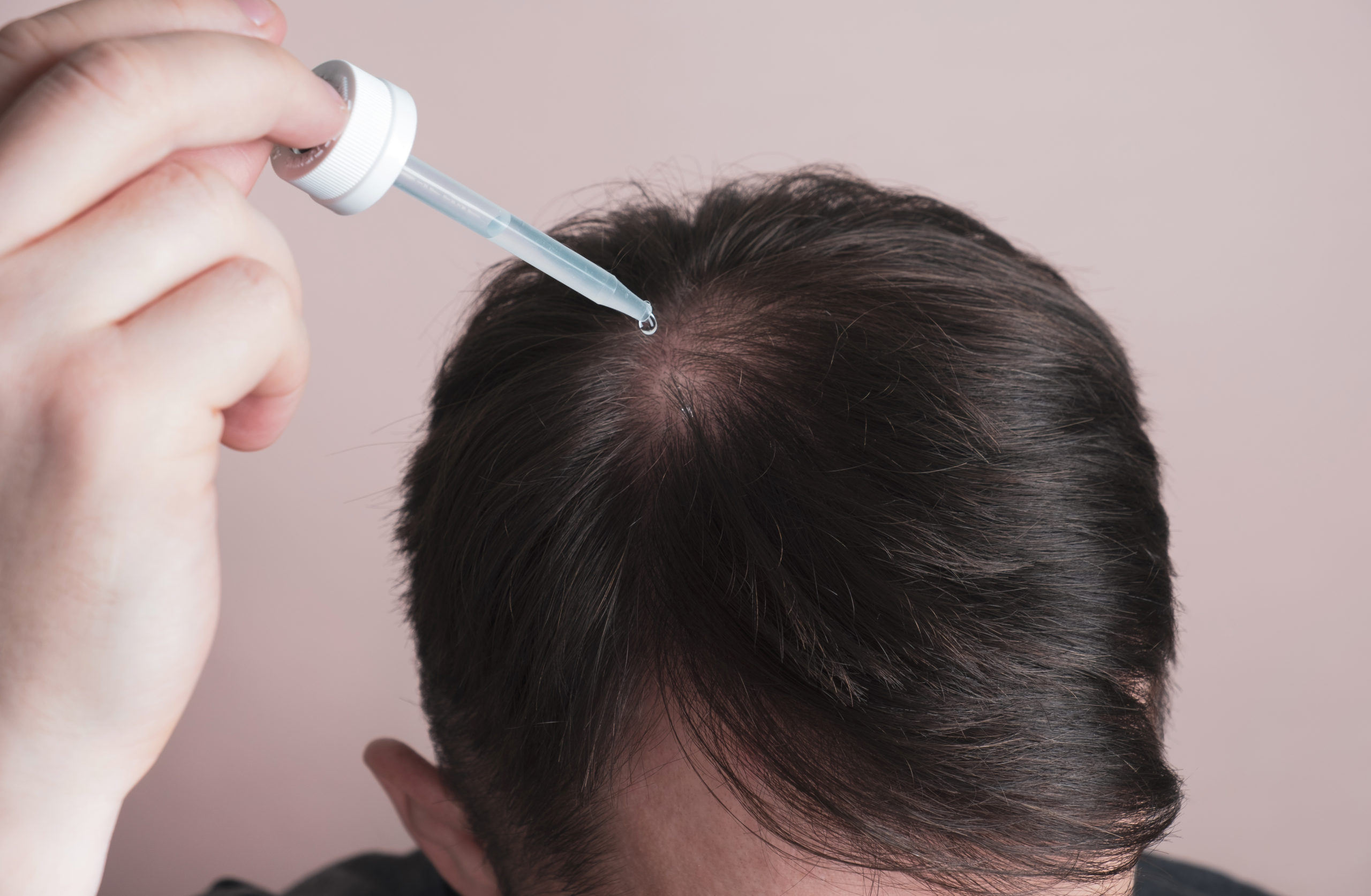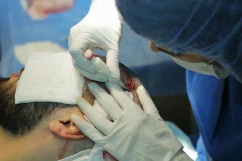How to Treat Male Pattern Baldness
Understanding the signs of hair loss and implementing treatment as soon as possible is one of the keys to halting further hair damage. The sooner you act to stop hair falling out, the more hair you can recover for male and female pattern hair loss.
Sadly, detecting hair loss isn’t often straightforward. Numerous balding misconceptions are floating around, thus it’s easy to confuse breakage with hair damage with baldness. Fortunately, there are some true indications of male pattern baldness that you may utilise to spot hair loss and treat it. Let’s proceed by learning how to treat male pattern baldness.
Summary
- What is the Definition of Male Pattern Baldness?
- Symptoms of Male Pattern Baldness
- What are the Causes of Androgenetic Alopecia?
- How to Treat Male Pattern Baldness
- Conclusion
What is the Definition of Male Pattern Baldness?
Male pattern baldness is a hair loss disorder induced by an amalgamation of genetic and hormonal circumstances. Male baldness is incredibly prevalent among the population, affecting more than half of all guys from the age of 25 to 45.
It impacts males of all ages, but it is more prominent in middle-aged men. In their twenties and forties, many men experience acute cases of male pattern hair loss, such as a receding hairline or scattered thinning. The vastly prevalent form of hair loss in men is male pattern baldness, usually recognised as androgenic alopecia.
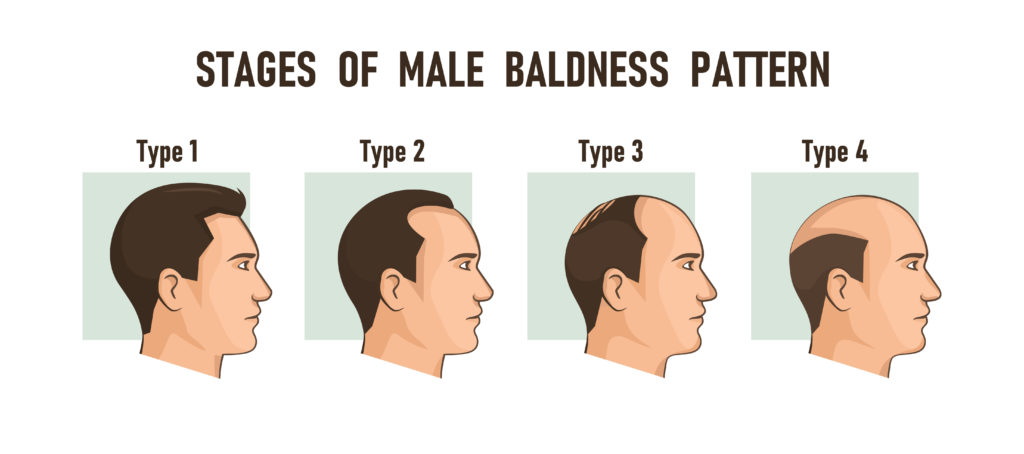
Symptoms of Male Pattern Baldness
Hair thinning is the most noticeable indication of male pattern baldness. It can manifest itself in several ways, from gradual thinning to a receding hairline. Hair loss can be a side effect of baldness. Over the years, you may not observe either hair falling out or abnormalities in your hair loss pattern, but when you look in the mirror under good lighting you may notice your scalp through your hair.
- Thinning Crown
Not every man with baldness experiences widespread hair loss across the head. You may still be vulnerable to male baldness even if you do not have a receding hairline, you can lose hair near your crown and appear thinner.
- Diffuse Thinning
Diffuse thinning is a type of hair loss that influences the health of your overall scalp, weakening your hair without impacting your hair follicles in any way. Whenever your hair is wet or in intense lighting, parts of the scalp become more noticeable.
- Receding Hairline
As your hairline recedes, many men start to see the first signs of male pattern baldness. Baldness begins as hair grows in a distinctive M-shape hairline, which features receding corners and a wider widow’s peak. Every hairline does not recede in the same way. If you have a receding hairline due to damage, your whole hairline may dwindle uniformly.
What are the Causes of Androgenetic Alopecia?
- Genetics
Family history is the main reason for male pattern baldness. It has been connected to male hormones that are recognised as androgens, according to studies. Androgens play a variety of roles in the body, including controlling hair growth.
This development process starts to undermine hair loss and the hair follicle reduces resulting in less hair growth. Every hair follicle’s development process finally comes to an end, and no replacement hair emerges to take its place. - Medication
Male baldness that is congenital naturally possesses no side effects. Many malignancies, medicines, thyroid disorders, and also anabolic steroids may induce baldness.
If you’re experiencing hair loss after starting a new drug or it’s preceded by other symptoms, consult your doctor. It is diagnosed by looking at the pattern of hair loss. They may conduct health tests and analyses to check out specific health issues, such as fungal scalp disorders or nutritional deformities, as the source of the issue. - Scalp inflammation
If inflammation, dryness, flaking of the scalp or hair breakage accompany the hair loss, it might be a sign of a health problem. - Hormones
Synthesis of androgenic components like dihydrotestosterone also results in baldness. The 5-alpha reductase enzyme produces dihydrotestosterone. Continuously, this enzyme converts male hormones into dihydrotestosterone (DHT).

How to Treat Male Baldness
For men who are feeling insecure about their appearance due to their hair loss, there are several treatment options available to help them to regain their hair as well as their confidence.
- Finasteride
Finasteride is a medical treatment that helps to prevent hair loss. It works by blocking the male hormone that causes hair loss in men. However, you need to use it every day in order to see results as when you stop using finasteride, your hair starts to fall out again. There are also several negative side effects to using finasteride, so you need to consult your doctor beforehand, for example affecting screenings for prostate cancer. - Hair Transplantation
A hair transplant is one of the most effective forms of treatment for hair loss. They work by extracting healthy hair follicles from the back of the head and transplanting them to the thinning or bald areas of the scalp. The benefits of a hair transplant include a more natural appearance and also the fact that it is a long-lasting treatment. Furthermore, it only requires one treatment instead of daily application like other methods of treatment. - Hair Styling
Men with complete hair loss can sometimes conceal their hair loss with a specific haircut or hairstyle. Your hair hairdresser or barber can assist you with styles that will help you conceal your bald patches. - Minoxidil
Minoxidil (Rogaine) is a topical scalp treatment that reduces baldness and encourages new hair growth by stimulating hair follicles. The effects of minoxidil can take anywhere from four months to a year to show, and it needs to be used every day in order to see results.
Conclusion
The only long-term treatment for male pattern baldness is a hair transplant. As a result, it is the most effective treatment, providing natural results. BioHair Clinic exclusively provides professional hair treatments to treat men and women, thus we’re well-versed in this hair restoration procedure. Following your procedure, our dedicated team will support you and answer any of your questions.
